Dominique Luchart's Blog, page 567
July 15, 2021
City-sized asteroids smacked ancient Earth 10 times more often than thought, ,

Asteroids the size of cities, like the one that wiped out the dinosaurs, slammed into the ancient Earth way more often than previously thought, a new study has found.
Approximately every 15 million years, our evolving planet would get a hit by a piece of rock about the size of a city, or even a bigger province, scientists with the new study said in a statement. The research was presented at the Goldschmidt geochemistry conference last week.
This violent period, which took place between 2.5 and 3.5 billion years ago, saw the planet in upheaval on a regular basis, with the chemistry near its surface undergoing dramatic changes that can be traced in the rocks in the ground even today, the researchers said.
In the study, Simone Marchi a principal scientist with the Southwest Research Institute in Boulder, Colorado and colleagues looked at the presence of the so-called spherules, small bubbles of vaporized rock that were thrown up to space by every asteroid impact, but then solidified and fell back to Earth, forming a thin layer that geologists see in the bedrock today.
Related: Saturn could be defending Earth from massive asteroid impacts
The team developed a new method to model the effect of asteroid impacts in terms of their ability to generate spherules and affect their global distribution. The bigger the asteroid, the thicker the layer of spherules in the rock should be. But when the researchers looked at the actual amount of spherules in the different layers of the bedrock and compared it with current estimates of past asteroid impacts, they found the two values did not match.
“We found that current models of Earth’s early bombardment severely underestimate the number of known impacts, as recorded by spherule layers,” Marchi said in the statement. “The true impact flux could have been up to a factor of 10 times higher than previously thought in the period between 3.5 and 2.5 billion years ago.”
Those past asteroid strikes may also have affected the oxygen levels and the ability of the young planet to support life.
“We find that oxygen levels would have drastically fluctuated in the period of intense impacts,” Marchi said. “Given the importance of oxygen to the Earth’s development, and indeed to the development of life, its possible connection with collisions is intriguing and deserves further investigation. This is the next stage of our work.”
According to Rosalie Tostevin, of the University of Cape Town, who was not involved in the study but specializes in ancient geology, some chemical markers point towards the existence of “whiffs” of oxygen in the early atmosphere, before a permanent rise that occurred around 2.5 billion years ago.
“There is considerable debate surrounding the significance of these whiffs, or indeed, whether they occurred at all,” Tostevin said in the statement. “We tend to focus on the Earth’s interior and the evolution of life as controls on Earth’s oxygen balance, but bombardment with rocks from space provides an intriguing alternative.”
[image error]
Some asteroid impact craters are clearly visible on the surface of Earth today but many have been erased by weather and geological activity. (Image credit: Dr Dale Nations, AZGS.)Rocky bodies without an atmosphere, such as the moon, carry a detailed record of past asteroid impacts. On a planet like Earth, with varied weather patterns and geological activity, the traces of many of the past impacts have long been erased. It took until the late 1970s for scientists to discover the Chicxulub impact crater in Mexico. It took a further few years for them to identify this impact as the cause of the extinction of dinosaurs.
“These large impacts would certainly have caused some disruption,” Tostevin said. “Unfortunately, few rocks from this far back in time survive, so direct evidence for impacts, and their ecological consequences, is patchy. The model put forward by Dr. Marchi helps us to get a better feel for the number and size of collisions on the early Earth.”
Follow Tereza Pultarova on Twitter @TerezaPultarova. Follow us on Twitter @Spacedotcom and on Facebook.
The post City-sized asteroids smacked ancient Earth 10 times more often than thought, , appeared first on NEWDAWN Blog.
Hubble trouble is latest glitch in space telescope’s long and storied history, ,
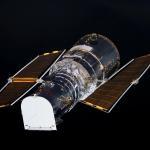
For the past month, our most beloved eye on the universe has been closed, blinded by a computer glitch that NASA experts are still working to solve.
After 31 years in space, the Hubble Space Telescope unexpectedly shut down on June 13 after suffering a problem that initially appeared to be the fault of an aging memory module. But the more NASA personnel tried to fix the issue, the more slippery it became. Now, the team thinks a device called the Power Control Unit is responsible, but it’s a relatively risky procedure to switch to the backup version, so NASA is taking its time to troubleshoot the issue.
“If you do it wrong, you can leave the spacecraft in a situation where you might not be able to recover, so you want to make sure you don’t do it wrong,” Paul Hertz, NASA’s director of astrophysics, told Space.com. “I think that’s the level of care and risk that we want to be aware of as we move forward.”
Related: The Hubble Space Telescope and 30 years that transformed our view of the universe
The team will attempt to switch the observatory to the backup system beginning on Thursday (July 15), after spending two weeks developing and evaluating the process on the ground, according to NASA statements.
No one is happy that Hubble is offline and its science is on hold indefinitely. But officials familiar with the telescope and the anomaly investigation have emphasized that they are confident the observatory will survive this incident, just as it has previous glitches.
“We’re all very optimistic that they will find a way,” Antonella Nota, the science lead for Hubble at the European Space Agency, which is a partner on the observatory, told Space.com.
Nota cited past issues Hubble has overcome, particularly successive gyro glitches that could have prevented the observatory from pointing correctly. In that case, engineers were able to develop new modes of observatory functioning that allowed Hubble to operate with just one of its six original gyros, instead of the three it was designed to require.
“That’s why I am optimistic and I’m smiling,” she said. “Because the system was designed to have so much redundancy and because the engineers are so creative in coming up with solutions, I think that this will be fine.”
[image error]
The Hubble Space Telescope as seen in 2003 with new solar arrays (Image credit: NASA)Science on pauseIn the meantime, a month’s worth of scientists who had snagged highly prized observing time using the instrument must wait and hope they’ll get the time back after the observatory comes back online.
“This is the first time that I got my own time with Hubble, and unfortunately I haven’t gotten any observations yet,” Theodora Karalidi, an assistant professor at the University of Central Florida, told Space.com. Karalidi was scheduled for observations to begin just days after Hubble experienced its glitch, and even if it came back on line this instant, the observatory can’t get a good look at her target for about nine months.
Karalidi’s observations would have targeted a system that scientists call Luhman 16, which is the pair of brown dwarfs — so-called “failed stars” — nearest to our solar system. These objects are on the scale of Jupiter and, like that world, host dynamic systems of cloud bands and belts. Using Hubble’s Wide Field Camera 3 instrument, Karalidi wanted to track features in the brown dwarfs’ atmospheres from one local day to the next.
“The atmospheres are really dynamic,” she said of worlds like those in Luhman 16. The brown dwarfs in the system complete a rotation every five or eight hours, so Hubble should be able to track the weather on these alien worlds. “You can see clouds moving,” Karalidi said. (Hubble can likely distinguish features the size of Jupiter’s Great Red Spot on the Luhman 16 pair, she said.)
Karalidi’s hope was that these observations of fairly nearby worlds would teach scientists how to better understand brown dwarf atmospheres, and in turn the atmospheres of exoplanets more generally.
But instead of her data, Karalidi got an email explaining that Hubble was offline and her observations wouldn’t occur. “The way it looks right now, I have to wait for a year,” she said — until April or May.
All of the observations Hubble has missed should be reschedulable, Nota said — the observatory didn’t have any observations planned of so-called transient events that unfold rapidly on an astronomical timescale. “Everything will be rescheduled when possible,” she said. “It’s a loss, but it’s nothing that cannot be recovered.”
Assuming, of course, that the observatory itself can be recovered. “I just hope they rescue it and we keep on observing with Hubble,” Karalidi said. “It’s a great little telescope.”
[image error]
A 1989 artist’s depiction of the Hubble Space Telescope. (Image credit: NASA)Troubleshooting an iconThere’s nothing NASA loves quite as much as a good backup system, and Hubble is no exception. The observatory carries two computer systems to reduce the odds that any one glitch can put an end to the storied mission.
“The beauty of Hubble is that as a system, there is so much redundancy,” Nota said.
And in the history of space telescopes, Hubble is unique because it was designed for astronauts to repair in orbit, hitching rides on NASA’s space shuttles. And thank goodness: As originally deployed in 1990, the observatory’s optics were heartbreakingly blurry. Astronauts on the observatory’s first servicing mission repaired the system in 1993; four additional crews visited the telescope through 2009.
But by then, NASA’s space shuttle program was near its end, and the agency knew it wouldn’t be able to send another crew to tune up the venerable observatory. So when the agency planned the 2009 mission, the team did everything it could to prepare the telescope to survive years on its own.
In a fluke of timing, Hubble had just experienced a computer issue much like this one. So with a servicing mission already on the docket, NASA was able to add the relevant hardware replacement to the agenda.
Related: The best Hubble Space Telescope images of all time!
[image error]
The Hubble Space Telescope in 1993 as the space shuttle Endeavour approached for a servicing mission. (Image credit: NASA)Astronauts took the opportunity to replace plenty of other parts of the observatory as well in a bid to extend Hubble’s scientific career as long as possible. “When we serviced Hubble in 2009, we replaced pretty much everything that was aging and could be replaced,” Hertz said. “It was spiffed up and working at its peak performance and everything was fully redundant, and that’s exactly what we did on purpose to prepare ourselves for a day like today.”
After all, no machine lasts forever, especially one that spends decades in the harsh environment of space. And overall, the observatory has held up well in the more than a decade since that servicing mission. The biggest issues Hubble has faced since the final servicing mission were gyroscope glitches that NASA was able to mitigate by turning to a previously developed alternative pointing technique that only requires one functioning gyroscope.
But neither NASA nor ESA is shocked to see Hubble miss a few weeks of work. “As a telescope ages, you expect to have problems here and there,” Nota said. “I think it’s remarkable that Hubble is doing so well.”
So while scientists hold their breath and hope for the best, engineers are methodically designing, checking and triple-checking a procedure to resuscitate Hubble by turning the spacecraft to the backup version of a device that controls power to the main computer.
“It’s an international treasure, and so everything has to be weighted, and they’re being very careful,” Nota said. “I think we all agree that it is better to wait one more day but to make sure that everything is done properly, without rushing.”
[image error]
A comparison of the primary mirrors of the Hubble and James Webb space telescopes. (Image credit: NASA’s Goddard Space Flight Center)A partnership on the launch padEven as NASA works to get Hubble back online, the agency is also anticipating the launch of another observatory meant to become a crown jewel of astrophysics, the much-delayed James Webb Space Telescope, which is now targeting launch in mid-November.
“By the end of the year, we should have two telescopes working in synergy really in an amazing way,” Nota said. “The two together will be such a powerful tool, I think science will just make a leap forward when we’ll have both together.”
For years, scientists have dreamed of being able to use the two observatories as a pair. “We were very much looking forward to using the two in tandem,” Hertz said. “Astronomers have really been looking forward to that one-two punch of Webb and Hubble.”
If all goes well with the procedure NASA developed to switch power regulators, Hubble will be back up and running with plenty of time to greet its companion later this year. But Webb was never designed to replace Hubble. In fact, it was tuned to fill gaps in Hubble’s coverage by seeing types of light — namely, infrared wavelengths — that its older sibling can’t.
And whereas Hubble spends a significant portion of its time taking snapshots that become the glamorous images of the universe that so many have grown to love, Webb will gather many more spectra, the chemical fingerprints that scientists use to discern the ingredients of stars and planets around us.
So even though Webb, often referred to as “the next Hubble,” is headed to the launch pad soon, no one is done with Hubble. “The nearness of the Webb launch is immaterial to the effort we’re putting in on Hubble,” Hertz said.
“Hubble is a household name,” Nota said. “It’s the people’s telescope.”
Email Meghan Bartels at mbartels@space.com or follow her on Twitter @meghanbartels. Follow us on Twitter @Spacedotcom and on Facebook.
The post Hubble trouble is latest glitch in space telescope’s long and storied history, , appeared first on NEWDAWN Blog.
SmartThings energy monitor tracks your Samsung appliances – CNET, Megan Wollerton
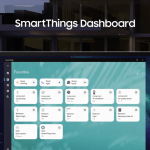
 Now you can get SmartThings alerts on your energy consumption.
Now you can get SmartThings alerts on your energy consumption.Screenshot/Samsung
SmartThings on Thursday announced SmartThings Energy, a new energy-tracking service for Samsung HVAC products and appliances. Available now on the SmartThings app, SmartThings Energy is designed to help you save money and reduce your home’s energy consumption by monitoring your usage and sending out alerts based on your current stats.
With SmartThings Energy, you’ll be able to view your devices individually and together to get a sense of how each appliance contributes to the whole. That means you should be able to see exactly how much energy your Samsung air conditioner is using this month compared to last — and make adjustments, as needed, to the target temperature to reduce your usage and save money. SmartThings Energy also sends alerts if you left a device on when you aren’t home, or are consuming more energy than your set goal.
An energy monitor is a nice idea, but SmartThings Energy at launch will only work with “most of Samsung Home Appliances and HVAC products,” according to SmartThings. The team plans to add support for devices from third-party brands, but doesn’t specify when.
Before SmartThings was Samsung SmartThings, it was just another startup on Kickstarter. The idea was clever: To take all of the various smart home apps — Nest, Philips, Belkin — and provide a similar user experience on one centralized app, the SmartThings app. You wouldn’t need to switch from app to app to control your devices ever again; you’d only need to open SmartThings (as long as you also bought the requisite router-tethered SmartThings hub).
SmartThings has evolved over time with new hardware, including next-gen hubs and SmartThings-branded accessories. It’s also added third-party partners and new services along the way. SmartThings even looped in support for assorted Samsung products, including TVs, refrigerators, air conditioners and more via Samsung Cloud.
While SmartThings is a good idea in theory, its app and overall functionality hasn’t ever delivered the way we hoped in testing. See my 2019 piece — Samsung SmartThings still hasn’t earned my trust in the smart home — for all of the reasons why. We’ll have to see how SmartThings Energy fits in with the broader system.
Many brands offer energy-monitoring stats, especially Nest, Ecobee and other smart thermostat companies. Other companies, like Sense, offer whole-home, professionally-installed energy monitors that tie into your breaker panel and provide a more holistic look at your home’s usage. You’d have to have only compatible Samsung appliances in your home for SmartThings Energy to provide that same degree of value.
Fortunately, SmartThings Energy is a free service that you can use or not, based on the Samsung appliances and HVAC devices you might have. SmartThings Energy is available now via the SmartThings app.

Now playing:
Watch this:
Samsung SmartThings and Android Auto bring smart home…
4:58
Samsung
The post SmartThings energy monitor tracks your Samsung appliances – CNET, Megan Wollerton appeared first on NEWDAWN Blog.
What a new book reveals about Facebook and Russian interference, Casey Newton
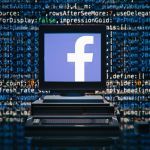
 Illustration by William Joel / The Verge
Illustration by William Joel / The VergeAs the second season of the great 2000s crime drama The Wire begins, Baltimore police detective Jimmy McNulty finds himself on a boat. After spending the previous season sounding the alarm about local drug kingpin Avon Barksdale, to the indifference and annoyance of his various superiors, McNulty is exiled to the city’s marine unit. (His bosses have learned he gets seasick, and punish him accordingly.) The special investigation team he was part of is forcibly disbanded; drug dealing in Baltimore continues unchecked.
Something similar happens to Alex Stamos, the non-fictional former chief security officer of Facebook, in the wake of his 2016-17 investigation into Russian interference on the platform. In An Ugly Truth: Inside Facebook’s Battle for Domination, authors Sheera Frenkel and Cecilia Kang detail the company’s dawning awareness of the foreign adversaries in their midst. By the time it’s all over, Donald Trump will be president, and Facebook’s halting response triggers an international reckoning over the size and power of technology platforms.
The broad outlines of this story are well known, and have been told on a regular basis ever since, including in this column. (The aftermath of the 2016 election, and Facebook’s role in it, were the original inspiration for this newsletter.) The value in An Ugly Truth comes from the detail it brings to the Russia investigation as it was experienced by some of its participants at the time. And while I ultimately come to some different conclusions than the authors do, the book is worth reading for everyone interested in social networks, trust and safety, and cybersecurity. (And, of course, for anyone else like me who is fascinated by Facebook history.)
First, some disclosures: Frenkel and Kang have been colleagues of mine on the Facebook beat for years, and I’ve long been a fan of their work. I’m also friendly with Stamos — no reporter can resist a loudmouth who always gets in trouble with his bosses for telling them things they don’t want to hear, since this is secretly how we all think of ourselves.
Stamos arrived at Facebook in September 2015 following a high-profile stint at Yahoo, where he discovered a vulnerability in Yahoo mail that allowed the US government to monitor the messages of Yahoo Mail users. The vulnerability had been approved by then-CEO Marissa Mayer; Stamos quit a few weeks later on principle.
There were actually two separate Russian campaigns on Facebook during the 2016 election. The first came from Russia’s military intelligence agency, the GRU. Facebook first discovered GRU activity in March 2016, according to a postmortem circulated internally the following year. GRU agents made fake Facebook accounts and pages, and used them to spread disinformation and false news. Stamos’ team shared reports on what it found with the FBI — it heard nothing back from the agency — and also with his direct supervisors.
Facebook was slow to remove some of what it found, in part because at the time it had no rule against foreign groups setting up groups and pages to manipulate American opinion. After Facebook became aware that a Russian-operated page known as DCLeaks was distributing stolen emails from the Clinton campaign to journalists on the platform, the company initially took no action. Only after a security analyst found that the documents contained personal information — a clear violation of Facebook rules — was DCLeaks banned.
But even as the company investigated, it said nothing publicly. The authors write:
Within the threat intel group, there was debate over what should be done. Facebook was a private company, some argued, not an intelligence agency; the platform was not duty-bound to report its findings. For all Facebook knew, the National Security Agency was tracking the same Russian accounts the company was seeing, and possibly planning arrests. It might be irresponsible for Facebook to say anything. Others argued that Facebook’s silence was facilitating Russian efforts to spread the stolen information. They said the company needed to make public that Russia-linked accounts were spreading hacked documents through Facebook. To them, the situation felt like a potential national emergency. “It was crazy. They didn’t have a protocol in place, and so they didn’t want us to take action. It made no sense,” one security team member said. “It felt like this was maybe a time to break precedent.”
While Facebook considered what to do about the Russians’ hack-and-leak campaign, a separate influence operation was unfolding under its nose. The Internet Research Agency, a “troll farm” that the New York Times had first profiled in 2015, was running its own attack. It was discovered only after the election, in 2017, when a senator alerted Facebook officials to its existence. A subsequent Facebook investigation found that the IRA had published 80,000 posts, spent $100,000 on 3,300 advertisements, and reached as many as 126 million Americans.
That investigation had been undertaken by Stamos’ team without the knowledge of Facebook CEO Mark Zuckerberg or COO Sheryl Sandberg — this is the moment in the book that I began to see him as Jimmy McNulty — and Frenkel and Kang report that this put him in a tenuous position. Tensions spilled out during a presentation of the team’s findings to Zuckerberg and his leadership team in December 2016, a month after the election:
His investigation could expose the company to legal liability or congressional oversight, and Sandberg, as the liaison be- tween Facebook and Washington, would eventually be called to DC to explain Facebook’s findings to Congress. “No one said the words, but there was this feeling that you can’t disclose what you don’t know,” according to one executive who attended the meeting. Stamos’s team had uncovered information that no one, including the U.S. government, had previously known. But at Facebook, being proactive was not always appreciated. “By investigating what Russia was doing, Alex had forced us to make decisions about what we were going to publicly say. People weren’t happy about that,” recalled the executive. “He had taken it upon himself to uncover a problem. That’s never a good look,” observed another meeting participant.
Stamos would spend the next year managing the fallout of the revelations, and putting together various plans to restructure Facebook’s security operations. One of his ideas was to embed security people throughout the organization, rather than silo it from the rest of Facebook. The company accepted this idea, but it wound up leaving him like McNulty on the boat — a man without a country:
When he returned to work in January, the security team of over 120 people that he had built was largely disbanded. As he had suggested, they were moved across to various parts of the company, but he had no role, or visibility, into their work. Instead, he was left in charge of a whittled-down team of roughly five people.
Stamos left Facebook in the summer of 2018 to create the Stanford Internet Observatory, where he built a team that analyzes influence operations on social platforms around the world.
What lessons have platforms learned, if any, since 2016? Facebook massively expanded its team devoted to “platform integrity,” which monitors for Russia-style campaigns, and publishes monthly reports on the networks of adversaries that it disrupts around the world. (This has become so routine that they now typically get little coverage beyond Facebook’s own blog posts on the subject.)
“Since 2017, we have removed over 150 covert influence operations originating in more than 50 counties,” Facebook told me today, “and a dedicated investigative team continues to vigilantly protect democracy on our platform both here and abroad.”
Meanwhile, disinformation in US elections has become a primarily domestic concern, driven by politicians like former President Donald Trump, who spread lies with impunity and was often rewarded for it by his voters.
The Wire is a show about how people are shaped by the systems that they work within, and An Ugly Truth offers a story like that, too. Facebook’s police found plenty of suspicious activity while out on patrol, but they struggled to make an airtight case — to say, definitively, what they were looking at. Amid that uncertainty, the almighty inertia of bureaucracy took over: who do we tell? What do they do with what they tell them? Who is ultimately responsible? And in the confusion, Russia’s campaign succeeded.
At the same time, the story of the 2016 election is much bigger than Russia and Facebook. It’s a story about the accelerating polarization of our country; white anxiety over demographic changes; the decline of local journalism; and the fracturing of our broader information ecosystem. Even the Russia story was not simply about Facebook: the country pioneered the strategy of “hack and leak” — stealing documents and sharing them with mainstream news outlets while concealing their origin, giving those documents greater legitimacy when they were published.
Facebook had many failures during 2016, but the greatest one was of imagination: an inability to see that a platform that had gathered together billions of people would create a powerful point of leverage for foreign adversaries seeking to reshape public opinion — and to benefit from the platform’s own viral sharing mechanics.
Facebook has since learned that lesson; it has never been harder to set up a network of fake accounts on the network and keep it operational. And yet just because Facebook is less vulnerable to attack from state actors doesn’t mean its current information environment is good or healthy. High-quality news is too often relegated to a secondary tab, while depending on your friend and follow graph, your News Feed could be as dumb, partisan, and polarizing as ever.
What will be the result of people consuming years of feed posts that misinform them, or lead them to outrage? Who is the McNulty inside Facebook empowered to run that investigation?
It feels like there are some failures of imagination there, too.
While the Russia story is at the heart of An Ugly Truth, the book also serves as a kind of compendium of Facebook’s highest-profile scandals over the years. Searching for a connecting thread, the authors attribute the company’s history of public relations crises to its capitalist origins: “the platform is built upon a fundamental, possibly irreconcilable dichotomy: its purported mission to advance society by connecting people while also profiting off them.”
Certainly, Facebook triggered several crises as a direct result of pursuing growth and profits above all else: the initial launch of the News Feed; the Beacon advertising disaster; setting posts to public by default in 2009; and most damningly, the tragic, heedless expansion into a genocidal Myanmar, where Facebook initially had only a single moderator who spoke Burmese.
Other topics covered here, though, don’t fit quite as squarely into that narrative. The company’s use of human moderators to select “trending topics” for the feed, which is given much space in the book, actually improved Facebook by keeping misinformation out of sight. To the extent it was a scandal, it was only because selecting for high-quality news disadvantaged Republican outrage bloggers.
In other cases, the company faces blowback because it exercises its right to moderate content as it sees fit: leaving up a manipulated video of Nancy Pelosi, say, or defending a decade-old policy permitting Holocaust deniers on the platform. (That policy was reversed last year.) Whatever you think of those decisions, they don’t strike me as capitalist growth hacks.
To me, the most alarming Facebook scandals have always been the ones that reflect the company’s ability to affect human psychology, typically without our knowledge. Like the time in 2012 that the company experimented with altering users’ moods by showing them happy or sad posts in the News Feed. Or the revelation that Cambridge Analytica used Facebook data to create “psychographic profiles” of users in hope of better targeting them with ads to benefit the Trump campaign. (This effort seems to have been a total failure, but the fact that this even seemed possible fueled much of the outrage toward that company and Facebook.)
You can look at the story of Russian interference on Facebook as a growth-and-profits scandal, I guess — if you want to suggest it happened only because the company under-invested in security and moderation, which everyone at Facebook now acknowledges it did. But to me this one falls in that last camp — the human psychology one. I’m ultimately less worried that it took Facebook so long to find the Russians as I am about what it was possible for them to do using Facebook. After all, the same viral machinery they used so successfully in 2016 is still being used every day — by Americans against other Americans, and by various foreign governments against their own citizens.
To me, that’s not a story about the business model being “broken,” as is so often said about the company. If Facebook had switched off ads in 2015 and become a nonprofit organization, the vast majority of the 2016 Russian influence operation still would have been possible. To me, this is a story about a social network that is massive, powerful, mostly unregulated, and by virtue of its data being privately owned, still poorly understood. In 2021, Facebook now has the tools for dealing with foreign adversaries. But Americans still don’t have many tools for dealing with Facebook.
So by all means, let’s keep debating those bills now before Congress. Let’s pass a national privacy law. Let’s scrutinize future mergers and keep an eye on Facebook’s VR ambitions. And let’s invest in public social media — and public media in general — to see what kinds of good we can do online when we remove the profit motive.
But let’s also not allow ourselves the comforting delusion that the problems in our information environment begin and end in Menlo Park. All year now, cyberattacks have been ravaging our country — many of them appearing to originate in Russia. That’s a different story from the one told in An Ugly Truth, but it is also part of a single story, which is that for more than five years now, various parts of our critical internet infrastructure have been under attack. Until very recently, thanks to the president they helped elect, Russia has suffered very few consequences for its actions. And among all the ugly truths on parade here, that might be the one that baffles me most of all.
This column was co-published with Platformer , a daily newsletter about Big Tech and democracy.
The post What a new book reveals about Facebook and Russian interference, Casey Newton appeared first on NEWDAWN Blog.
July 14, 2021
Candace Parker becomes first woman to feature on NBA 2K cover, Sam Byford

Candace Parker has become the first WNBA player to appear on the cover of an NBA 2K game. The Chicago Sky forward, a six-time WNBA All-Star, two-time WNBA MVP, and 2016 WNBA Finals MVP, is featured on the cover of the WNBA 25th Anniversary Special Edition of NBA 2K22, which will be released on September 10th.
“I grew up a video game fanatic, that’s what I did, to the point where my brothers would give me the fake controller when I was younger where I think I was playing and I wasn’t,” Parker tells ESPN. “All I wanted to do was just be like them. As a kid growing up, you dream of having your own shoe and dream of being in a video game. Those are an athlete as a kid’s dreams. To be able to experience that, I don’t take it lightly.”
Extremely proud and humbled to be the first female cover athlete in the history of @NBA2K
I’m honored to work with a company that’s investing in women and betting on us to succeed. I’m hopeful there will be many more badass females to follow pic.twitter.com/WJan4YE7Qt
— Candace Parker (@Candace_Parker)
The WNBA was added to 2K three years ago with NBA 2K20, so it’s a little surprising it’s taken this long for a female player to be featured on the cover — particularly since 2K Sports often releases multiple versions of the game starring different athletes. Last year’s 2K21, for example, had Damian Lillard on the last-generation console versions, Zion Williamson on the PS5 and Series X versions, and a special “Mamba Forever” edition honoring the late Kobe Bryant.
This time around, the Dallas Mavericks’ star guard Luka Doncic will be featured on the standard cover, while an NBA 75th Anniversary Edition cover depicts NBA legends Kareem Abdul-Jabbar, Dirk Nowitzki, and Kevin Durant. There’s yet another special edition starring the Washington Wizards’ Rui Hachimura, which will only be available in Japan.
NBA 2K22 will be released on the PS5, PS4, Nintendo Switch, PC, and Xbox consoles.


The post Candace Parker becomes first woman to feature on NBA 2K cover, Sam Byford appeared first on NEWDAWN Blog.
Amazon adds AirPlay 2 and HomeKit to two Fire TV Edition TVs, Ian Carlos Campbell

Amazon is adding support for AirPlay 2 and HomeKit to two of its Fire TV Edition TVs in a free update, the company announced on Wednesday. Both the 2020 Toshiba 4K UHD Smart Fire TV with Dolby Vision and the 2020 Insignia 4K UHD Smart TV will receive the features, before they arrive on Amazon’s less expensive Fire TV sticks and set-top boxes.
On these specific TV sets, AirPlay 2 should function the same on Apple’s own Apple TV, allowing you to send audio and video from your phone, tablet, or computer to the big screen and control playback from your device. Integrating with HomeKit, Apple’s smart home ecosystem, requires a little extra legwork: you’ll have to enable HomeKit in your TV’s settings under Display & Sounds > AirPlay & HomeKit > Set Up, and then add it as a device in the Home app. Once it’s added, you can use Siri to turn your Fire TV on and off, change the volume, or switch inputs.
Both AirPlay 2 and HomeKit coming to Fire TVs (and hopefully, one day soon, Fire TV sticks) should make using the TVs with Apple’s devices that much easier. Apple already has an in with Amazon’s devices — the Apple TV Plus app came to Fire TVs in 2019.
It’s a stark contrast to how these two companies were interacting a little over five years ago, Back then, Amazon had banned sales of competing hardware like the Apple TV (and Chromecast, and Nexus Player) in its marketplace because it claimed it was important to only sell media players that “interact well” with Prime Video. The companies have since reconciled, and reached a very favorable deal for Amazon that allows it to avoid Apple’s 30 percent App Store commission and use its own in-app purchase system. Now things are better. At least if you own an iPhone and Fire TV.
The post Amazon adds AirPlay 2 and HomeKit to two Fire TV Edition TVs, Ian Carlos Campbell appeared first on NEWDAWN Blog.
On This Day in Space! July 14, 2015: New Horizons spacecraft flies by Pluto, ,
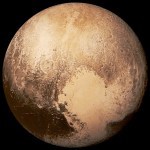
On July 14, 2015, a spacecraft flew by Pluto for the first time! NASA’s New Horizons spacecraft spent 9.5 years making the 3-billion-mile journey to Pluto.
When it finally arrived, it took some amazing photos of the dwarf planet’s surface. Most notably, the photos revealed that Pluto has a huge, heart-shaped plain, tall mountains and icy volcanoes.
[image error]
Pluto’s famous “heart,” as seen by NASA’s New Horizons spacecraft during its 2015 flyby of the dwarf planet. (Image credit: NASA/Johns Hopkins University Applied Physics Laboratory/Southwest Research Institute)The mission also found that Pluto and its largest moon Charon are tidally locked, which means that Pluto’s heart is always facing Charon, and the same side of Charon is always facing Pluto. It also seems to be borrowing some atmosphere from Pluto, which appears as a big red spot on Charon’s north pole.
Catch up on our entire “On This Day In Space” series on YouTube with this playlist.
[image error]
History of NASA: $22.99 at Magazines Direct
Discover the story of how and why NASA was created, its greatest triumphs, darkest days, and of the times it exceeded all possible hopes. A tale of adventure, heroism and resourcefulness, learn of the space agency’s greatest achievements and how — over six decades — the organization has consistently and tirelessly devoted itself to its founding principle: that “activities in space should be devoted to peaceful purposes for the benefit of all humankind”. View Deal
Still not enough space? Don’t forget to check out our Space Image of the Day, and on the weekends our Best Space Photos and Top Space News Stories of the week.
Email Hanneke Weitering at hweitering@space.com or follow her @hannekescience. Follow us @Spacedotcom and on Facebook.
Join our Space Forums to keep talking space on the latest missions, night sky and more! And if you have a news tip, correction or comment, let us know at: community@space.com.
The post On This Day in Space! July 14, 2015: New Horizons spacecraft flies by Pluto, , appeared first on NEWDAWN Blog.
US Air Force celebrates end of the world’s largest uncrewed satellite, which studied Earth’s radiation belts, ,
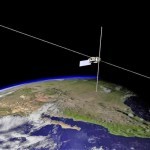
The U.S. Air Force Research Laboratory’s mission to study Earth’s Van Allen radiation belts and their effect on spacecraft has come to a close after exceeding its original planned lifetime of one year in orbit.
The Demonstration and Science Experiments (DSX) spacecraft, built and managed by the laboratory that’s also known as AFRL, launched on June 25, 2019 aboard a SpaceX Falcon Heavy rocket from NASA’s Kennedy Space Center in Florida. Billed as the “largest uncrewed structure in space” by the Air Force, DSX launched as part of the Department of Defense’s Space Test Program and was designed to operate in medium Earth orbit for at least one year. However, the mission ran nearly a year longer than expected, until May 31, according to a statement from the AFRL.
“We conducted over 1,300 experiments with DSX — many more than ever imagined,” Michael Starks, who leads AFRL’s Radiation Belt Remediation effort, said in the statement. “This is a huge contribution to understanding how the space environment affects our spacecraft and how we can protect against it — it was a mission that only AFRL could do.”
Related: See stunning photos of SpaceX Falcon Heavy’s first night launch
The DSX spacecraft measures nearly the length of a football field, representing the largest, self-supporting uncrewed satellite ever placed in space. The mission, originally conceived by AFRL researchers in 2003, aimed to explore Earth’s radiation belt dynamics, which could, in turn, aid in the development of more resilient spacecraft.
DSX was equipped with a variety of scientific instruments used to conduct space weather experiments and measure the relationship between very low frequency radio waves and energetic radiation belt particles in the medium Earth orbit environment. The satellite sported two massive, deployable antenna booms: One measuring 262 feet (80 meters) and another measuring 52 feet (16 m), making it one of the largest deployable structures in orbit, according to the statement.
DSX team members, including scientists, engineers, operations and support staff who worked on the project, gathered on June 7 at Kirtland Air Force Base to celebrate the science mission and the satellite’s extended success.
“When I think about DSX there are several things that come to mind. First, there is the abundance of science data collected that our nation and allies will be evaluating for years to come — DSX has been the epitome of a science mission,” Eric Felt, the director of AFRL’s Space Vehicles Directorate, said in the statement. “Second, the perseverance of this team has been amazing — the lab persevered for 18 years, seeing the spacecraft from birth to death with many difficulties along the way — commitment to the long-haul has paid off.”
During the celebration, team members shared memories of working on the mission and reflected on their experiences, including some of the trials the program faced.
“We experienced many challenges — both funding and technical. One of our challenges is that we were launching into medium Earth orbit, an orbit not often used, but critical to this mission,” Mark Scherbarth, chief engineer for AFRL’s Integrated Experiments and Evaluation Division, said in the statement. “We saw DSX from cradle to grave, and we persevered throughout many difficulties and changes in directorate and division leadership — each leader stood behind it.”
The DSX mission returned 706 days worth of data for scientists to evaluate. Surpassing its expected time in orbit, the mission collected crucial data to better understand the space environments in which satellites operate. In turn, this information can be used to build even better spacecraft in the future.
Follow Samantha Mathewson @Sam_Ashley13. Follow us on Twitter @Spacedotcom and on Facebook.
The post US Air Force celebrates end of the world’s largest uncrewed satellite, which studied Earth’s radiation belts, , appeared first on NEWDAWN Blog.
What makes a planet look bright? It’s complicated., ,

The planets are a dynamic bunch, and throughout the year as seen from Earth, these celestial bodies appear not only to move across the sky but also to brighten and fade in turn.
A planet’s distance from Earth is probably the most significant factor governing its apparent brightness. Last October, for instance, Mars shone brighter than Jupiter, thanks in large part because the Red Planet was as close to Earth as it will be until 2035. In contrast, Mars is now sinking into the western sunset sky, falling deeper into the brightening twilight glow, as Earth and Mars are practically on opposite sides of the sun.
But a planet’s overall brightness is also affected by its distance from the sun, which determines the intensity of sunlight illuminating its surface. When the two brightest planets, Venus and Jupiter, appear near to each other in our sky (as they will on April 30, 2022), examine them through a telescope and you’ll notice that the disk of Venus appears much more dazzling than that of Jupiter, partly because it is closer to us, but chiefly because it’s also more than seven times closer to the sun.
Related: The brightest planets in July’s night sky: How to see them (and when)
Another factor is the size of the planet in question. Mars, for instance, is only about twice as large as our moon, so as it gets farther away, it tends to diminish in brightness faster than a noticeably larger planet like Venus would.
A less obvious factor is the planet’s phase, the portion of its sunlit hemisphere turned toward the Earth. The two planets nearer to the sun than Earth, Mercury and Venus — the so-called “inferior” planets — display a complete cycle of phases just like our moon. Meanwhile, Mars appears significantly gibbous around the time of quadrature, that is, 90 degrees to the west or east of the sun. Jupiter and Saturn, in contrast, show only a slight gibbous effect, primarily because of their much greater distances from both the Earth and the sun.
Still another factor to consider is the planet’s reflectivity or albedo. This factor depends on the planet’s surface, including light and dark areas that may rotate into and out of view. Compared to the other planets, Venus has a very high albedo of around 70% thanks to its blanket of highly reflective clouds. Contrast this to our moon, which — it may surprise you — is a rather poor reflector: over the visible spectrum, it reflects a mere 12% of the light hitting it, absorbing the rest.
An ‘illuminating’ formulaIn calculating a planet’s brightness, we have already noted that the first consideration is its distance from the sun. For that we must utilize the inverse-square law, which states that a specified physical quantity is inversely proportional to the square of the distance from the light source. So, from 2 feet away, a candle looks only 1/4 as bright as it does from 1 foot. From 3 feet it looks 1/9 as bright, from 4 feet 1/16 and so on. It’s a law that affects so much of nature — not only light and other forms of radiation, but gravity as well.
The next factor, how far the planet is from us, again stems from the inverse-square law. The closer a planet is to us, the larger it appears in apparent size. And its apparent surface area correspondingly increases as the square of its diameter. In mid-September, Mars will be 245 million miles (395 million kilometers) from Earth and will sport a tiny 3.5-arc-second disk. Compare that to Aug. 27, 2003, when Mars was at a record-setting close distance of 34.6 million miles (55.7 million km) away and appeared 25.1 arc seconds in diameter.
[image error]
The gibbous moon as seen from the International Space Station in May 2021. (Image credit: NASA)Going through a phaseThe impacts of phase effects are more complicated to calculate. For the moon, anyone can see that the closer it is to the full phase, the brighter it appears.
But consider Venus, which has a virtually uniform cloud cover and moves around the sun in a nearly circular orbit. Therefore, its brightness depends almost entirely on its distance from Earth and on its phase. So when Venus is very close to inferior conjunction (the point when the planet passes between Earth and the sun), it rapidly approaches our planet and as its phase thins, its disk appears to grow substantially.
The planet reaches its greatest brilliancy (about magnitude -4.9) when it appears as a crescent, approximately 25% illuminated, and coming about 36 days before and after inferior conjunction. We call this the “greatest illuminated extent” of Venus — a compromise between the amount of its disk that is illuminated versus its apparent size. Although it’s only a slender crescent, we see more of Venus in total area illuminated per square arc second than at any other time.
Venus will reach this point in its current evening apparition on Dec. 3, when it will shine nearly three times brighter than it does now and its disk will appear nearly 3.5 times larger!
Yet, it’s a different story for Mercury, a planet that is similar in composition to the moon. In fact, its albedo is actually a trifle less than the moon at just 11%. Despite the fact that this speedy planet swings in close to us at inferior conjunction, the amount of reflected sunlight we see from it is less because it appears as a crescent. Thus, like the moon, Mercury is brightest when “full,” when it is on the opposite side of the sun from Earth.
In his book “The Solar System and Back” (Doubleday, 1970), the late, great science-fiction writer Isaac Asimov erred when he stated in the first chapter that Mercury and Venus are “both at their brightest in the crescent stage.” True enough for Venus, but not for Mercury!
Joe Rao serves as an instructor and guest lecturer at New York’s Hayden Planetarium. He writes about astronomy for Natural History magazine, the Farmers’ Almanac and other publications. Follow us on Twitter @Spacedotcom and on Facebook.
The post What makes a planet look bright? It’s complicated., , appeared first on NEWDAWN Blog.
NASA, DOE fund three nuclear thermal space propulsion concepts, ,
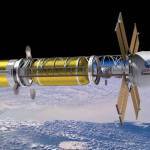
Nuclear-powered spaceships for fast trips to Mars may now be one step closer to reality.
NASA and the U.S. Department of Energy (DOE) have teamed up to fund three design concepts for reactors that could become part of a nuclear thermal propulsion system, a next-generation technology that could make the exploration of deep space faster and more efficient.
For example, a spacecraft powered by a nuclear thermal rocket could potentially get to Mars in just three to four months, experts say — about half the time required using traditional chemical rockets.
Related: Superfast spacecraft propulsion concepts (images)
“By working together, across government and with industry, the United States is advancing space nuclear propulsion,” Jim Reuter, associate administrator for NASA’s Space Technology Mission Directorate, said in a statement. “These design contracts are an important step towards tangible reactor hardware that could one day propel new missions and exciting discoveries.”
The newly announced contracts will be awarded through the Idaho National Laboratory (INL), the DOE’s chief site for nuclear energy research. Each contract is worth up to $5 million. The money will fund 12 months of development work, which will culminate in the production of a reactor design concept. INL experts will evaluate those concepts, then provide recommendations to NASA about how to proceed, agency officials said.
The three companies that received contracts are Virginia-based BWX Technologies, Inc., which will work with Lockheed Martin on the project; General Atomics Electromagnetic Systems of San Diego, which will partner with X-energy LLC and Aerojet Rocketdyne; and Seattle-based Ultra Safe Nuclear Technologies, whose partners are Ultra Safe Nuclear Corporation, Blue Origin, General Electric Hitachi Nuclear Energy, General Electric Research, Framatome and Materion.
Nuclear energy has powered spacecraft almost from the dawn of the space age, helping robots such as NASA’s Curiosity and Perseverance rovers on Mars, Cassini Saturn probe and twin Voyager craft do their pioneering work.
That type of nuclear tech harnesses the heat generated by the radioactive decay of plutonium-238, converting it to electricity that powers scientific instruments and other gear. Nuclear thermal propulsion systems are something different entirely. They would transfer the heat generated by a nuclear reactor to a liquid propellant such as hydrogen, which would then transition to the gas phase, expand and be funneled through a nozzle, creating thrust.
Nuclear thermal propulsion systems would feature higher thrust and twice the propellant efficiency of traditional chemical rockets, NASA officials have said. Those advantages are quite appealing to the space agency, which is working to send astronauts to Mars in the 2030s and wants to minimize travel time to and from the Red Planet.
Nuclear reactors could also help humanity set up shop on other worlds after they get there. For example, NASA is working on a fission power system for use on the moon and Mars.
“NASA intends to partner with the DOE and INL to release a request for proposals that asks industry for preliminary designs of a 10-kilowatt class system that NASA could demonstrate on the lunar surface,” agency officials wrote in the statement. “Maturing fission surface power can also help inform nuclear electric propulsion systems, another candidate propulsion technology for distant destinations.”
Mike Wall is the author of “ Out There ” (Grand Central Publishing, 2018; illustrated by Karl Tate), a book about the search for alien life. Follow him on Twitter @michaeldwall. Follow us on Twitter @Spacedotcom or Facebook.
The post NASA, DOE fund three nuclear thermal space propulsion concepts, , appeared first on NEWDAWN Blog.



